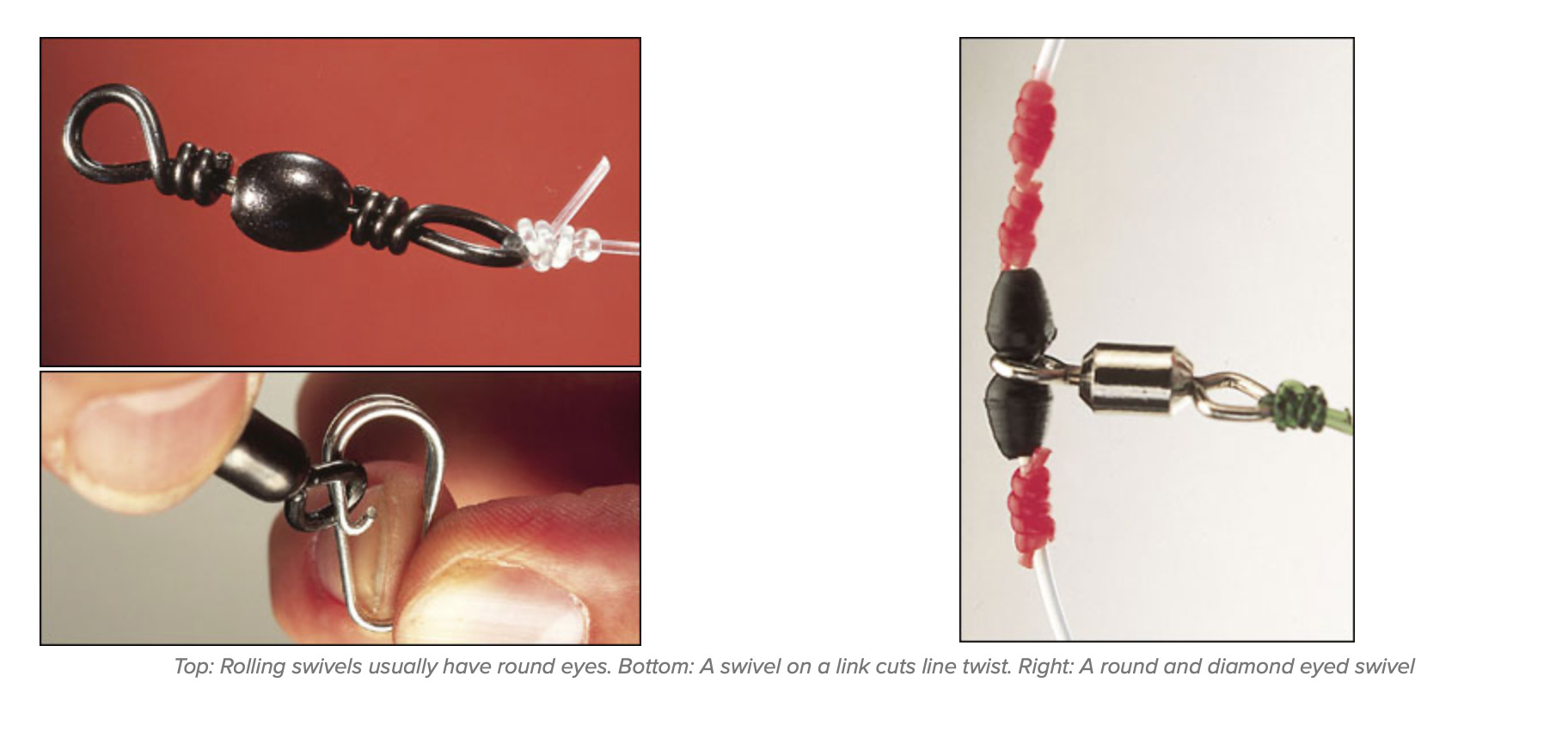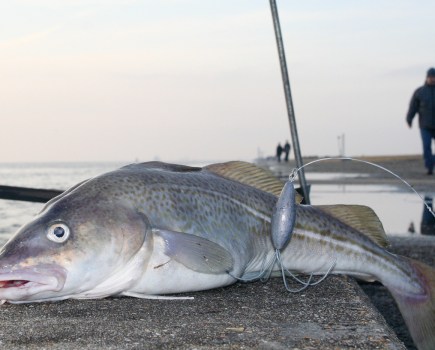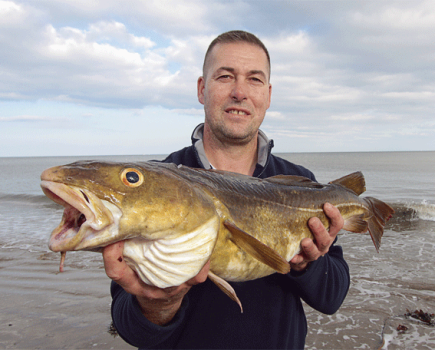In the hierarchy of sea angling tackle, swivels and links are like hooks – few people take notice of them. We need them, but ever wondered why?
THERE ARE SEVERAL types of swivels, but they work in much the same way with eyes that twist independently to prevent line twist.
Rolling swivels are round, usually with round eyes, diamond swivels have a diamond-shaped eye rather than round, while barrel swivels are the type usually made from brass with a twist of wire at each eye.
Another is called the crane swivel because its body resembles the assembly on a crane’s hook.
The only swivel that’s a bit different is the Dexter, which has a detachable eye for attaching rigs to mainline quickly.
You’ll also see there is a variety of link swivels, a pattern with a lead or line link attached to it. They include the American snap, interlink, snap link and cross lock and this relates to the way the wire clips up to secure the lead weight.
Some are made of wire and some, like the American snap link, have a metal plate to trap the wire clip. Beware of using an American snap that is too small because they can open up under extreme pressure.
The popular Gemini Genie clip is safe to use as a lead link for casting, being made from marine grade stainless steel. It secures the lead weight through wire pressure alone.
Swivels used to hold the hook snoods on a terminal rig decrease line damage caused by small fish and also enable your snoods to be lengthened or replaced easily.
A swivel placed on your mainline can be used to attach terminal rigs via a lead link. Alternatively you can add a swivel to your terminal rig and a lead link to the end of the mainline.
EASY WAYS TO IMPROVE YOUR TERMINAL RIG OPTIONS
LARGE swivels can even be used to sink rigs closer to the sea bed or you can join your lead weight to a terminal rig with a lead link. This prevents the knot being damaged by pebbles, rocks and sand as you retrieve your rig.
This is an important rule of rig making because a line tied direct to a lead weight gets damaged very quickly and could cause a very dangerous snap-off during the middle of your cast.
A swivel added to a lead link can also reduce the line twist caused by oddly shaped or less streamlined weights like the watch and bell leads that are popular with boat anglers.
Cut your knot ends fairly tight on swivels otherwise a spur of line is left sticking out and is a magnet for other line and fine weed; this is a major cause of rig tangles.
A three-way swivel is the ideal way to construct a simple paternoster. Mainline is attached to the top eye, the hook snood goes on the side eye and line to the lead weight is tied to the lower eye.

Three-way swivel
The lead weight line can be a weak link made up of 10-15lb mono if power casting is not employed. You can use a three-way swivel for attaching an extra hook snood to a sliding float rig.
You can construct a basic terminal rig with a single large swivel by tying the mainline and the hook snood to the top eye and the mono link for the lead weight on the bottom eye; a simplest boat rig.
The best knot to joining a swivel or lead link to line is a three-turn Grinner. It can be pulled tight without kinking the line, which is often the case with a half blood knot.
A swivel or lead link is the easiest way to join a rig or lure to your mainline. Either one lets you to change rigs in an instant, which is useful if your line tangles with another angler’s mainline or terminal rig. Using an American snap link when spinning enables a quick and easy change of lures.
There are a number of different eyed swivels – look out for the type with a round eye at one end and a diamond eye at the other, which is perfect for when you are making rigs.



HOW TO ENSURE THAT YOUR SWIVELS ARE SAFE
ENSURE that swivels and links are strong enough, especially if they are to take the strain of beach casting. The minimum breaking strain for swivels used within the main body of a rig is 60lb.
Modern swivels are surprisingly strong for their size and the smallest offer less of a trap for weed and line tangles.
Snood swivels with a built-in bait clip, like the Breakaway Cascade, are the most efficient for streamlining rigs when you are long casting.
Swivels come in a range of breaking strains and sizes, so it is essential to buy by breaking strain because this can vary between different makes and sizes. Swivel sizes are similar to hook sizes, which go from 10 down to 1 and then 1/0 upwards. Typically a size 10 is 40lb breaking strain and a 2/0 is 225lb.
Buy your swivels and clips in bulk because it is far cheaper than the small packets of ten or so, but beware of cheap snaps, swivels and wire lead links because they can open up under pressure.
Cheap swivels don’t actually swivel, so best bin them and buy a well-known brand that actually rotates under load.









